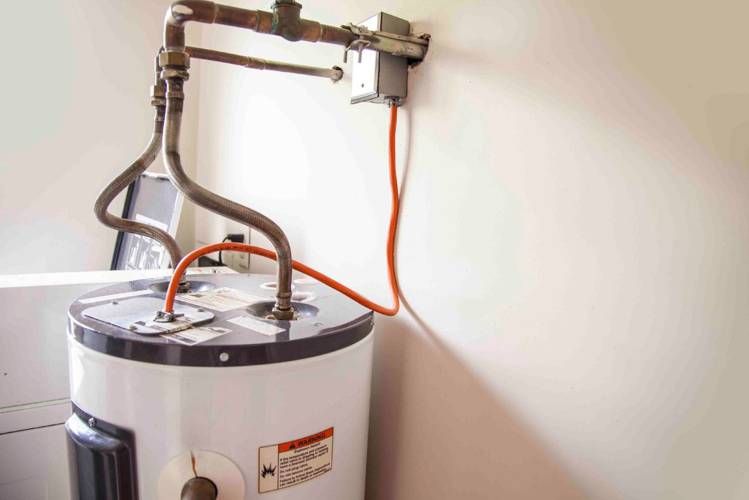
What Does it Cost to Replace a Water Heater?
When it comes to replacing your water heater, there are several important factors to consider. One of the key things to think about is the tankless water heater flush cost. This is an essential maintenance task that helps keep your tankless water heater running efficiently and prolongs its lifespan.
So, what exactly is the tankless water heater flush cost? Well, it can vary depending on a few different factors. Firstly, the size and type of your tankless water heater can impact the cost. Larger units may require more time and resources to flush properly, which can drive up the cost.
In addition, the complexity of your plumbing system can also affect the cost. If your water heater is located in a hard-to-reach area or requires special equipment to access, this can increase the overall cost of the flush.
It’s also worth noting that some companies may charge extra for additional services, such as inspecting and cleaning the heat exchanger or replacing worn-out parts. These additional services can add to the tankless water heater flush cost but are often worth considering to ensure the longevity of your water heater.
Ultimately, while the tankless water heater flush cost is an important factor to consider, it’s essential to remember the long-term benefits. Regular flushing helps remove mineral buildup and sediment from your water heater, improving its efficiency and preventing costly repairs down the line.
So, when budgeting for water heater maintenance, don’t overlook the tankless water heater flush cost. Consider the size and complexity of your unit and weigh the benefits of additional services. By investing in regular maintenance now, you can save money in the long run and ensure your tankless water heater continues to operate smoothly.
The True Cost of Replacing a Water Heater
When it comes to replacing a water heater, the cost goes beyond just the price tag of the new unit. Many factors need to be considered to understand the true cost of this home improvement project. One important factor to consider is the cost of a tankless water heater flush.
A tankless water heater flush is a crucial maintenance task that ensures the longevity and efficiency of your new water heater. Over time, mineral deposits and debris can build up in the system, causing it to become less efficient and potentially leading to breakdowns. By flushing the tankless water heater regularly, you can prevent such issues and increase the lifespan of your unit.
However, this maintenance task comes with its own cost. The tankless water heater flush cost varies depending on various factors, including the size of your unit, the complexity of your plumbing system, and the rates of the professional you hire to do the job. On average, you can expect to pay around $100 to $150 for a tankless water heater flush.
While this may seem like an additional expense, it is essential to consider it as part of the overall cost of replacing a water heater. By investing in a tankless water heater flush, you are ensuring the optimal performance and longevity of your new unit, potentially saving yourself from costly repairs or premature replacements in the future.
It is worth noting that some manufacturers may require regular tankless water heater flushes to keep the warranty valid. Neglecting this maintenance task could void your warranty and leave you responsible for any future repairs or replacements.
In conclusion, when considering the cost of replacing a water heater, it is important to factor in the cost of a tankless water heater flush. While it may seem like an additional expense, it is a crucial step to ensure the efficiency and longevity of your new unit, potentially saving you from costly repairs or replacements down the line.
Remember to consult with a professional plumber for an accurate estimate of the tankless water heater flush cost specific to your situation.
Initial Investment
When considering the cost of replacing a water heater, one important factor to keep in mind is the initial investment required. The type of water heater you choose will greatly impact this initial cost.
If you opt for a traditional tank water heater, there will be a purchase cost associated with the unit itself. Additionally, installation costs may be incurred, including labor charges for a professional plumber to set up and connect the unit.
On the other hand, if you decide to go with a tankless water heater, there might be a higher initial investment compared to a traditional tank water heater. The tankless water heater flush cost should also be considered, as these types of heaters require periodic maintenance to remove mineral build-up and ensure optimal performance.
While the initial investment for a tankless water heater may be higher, there are several long-term benefits that can offset this cost. Tankless water heaters are more energy-efficient and can provide significant savings on monthly utility bills. They also have a longer lifespan compared to traditional tank water heaters, reducing the need for frequent replacements.
In conclusion, when calculating the cost of replacing a water heater, it’s crucial to evaluate the initial investment required. Consider the type of water heater, such as a traditional tank or tankless, and factor in the associated costs like purchase, installation, and maintenance. By weighing these factors, you can make an informed decision that aligns with your budget and long-term financial goals.
Energy Efficiency
Energy efficiency is an important factor to consider when replacing a water heater. The efficiency of a water heater refers to how much energy it uses to heat and maintain the temperature of the water. Choosing an energy-efficient water heater can help reduce your energy consumption and save you money on your utility bills.
One way to improve the energy efficiency of your water heater is to regularly flush it. Over time, sediments and minerals can build up in the tank, causing it to work harder and use more energy to heat the water. Flushing the water heater can help remove these deposits and improve its overall efficiency.
The cost of a water heater flush can vary depending on several factors, including the size and type of the water heater, the location of the tank, and any additional services required. It is recommended to hire a professional plumber to perform the flush, as they have the knowledge and experience to do it safely and effectively.
When considering the cost of a water heater flush, it’s important to weigh it against the potential energy savings. While there may be an upfront cost involved, the long-term energy savings can outweigh it. An energy-efficient water heater can help reduce your energy consumption, resulting in lower utility bills and a smaller carbon footprint.
Overall, energy efficiency plays a crucial role in the cost of replacing a water heater. By choosing an energy-efficient model and regularly flushing it, you can not only save money but also contribute to a more sustainable future.
Size and Capacity
When it comes to choosing a water heater, size and capacity are important factors to consider. The size of the water heater will determine its ability to meet your household’s hot water needs.
Firstly, you must determine the size of your home and the number of people living in it. This information will help you calculate the amount of hot water you will need on a daily basis. A larger home with more occupants will require a water heater with a higher capacity.
Additionally, you should consider the space available for the installation of the water heater. Tankless water heaters, for example, are a popular choice for households with limited space, as they are small and compact.
Furthermore, the size and capacity of the water heater can affect the cost. Typically, larger water heaters with higher capacity will be more expensive than smaller ones. However, it is important to note that the upfront cost of a water heater is not the only cost to consider. Other factors, such as energy efficiency and tankless water heater flush cost, should also be taken into account.
Type of Water Heater
When it comes to choosing a water heater, there are several types to consider. Each type has its own advantages and disadvantages, as well as varying costs.
1. Conventional Tank Water Heater: This is the most common type of water heater found in homes. It consists of a tank that holds a certain amount of hot water. The cost of replacing a conventional tank water heater may range from $500 to $1500, depending on factors such as the size and efficiency of the unit.
2. Tankless Water Heater: These water heaters heat water on demand, eliminating the need for a storage tank. They are more energy-efficient and may have a longer lifespan compared to conventional tank water heaters. The cost of replacing a tankless water heater may range from $1500 to $4000, depending on factors such as size, brand, and installation requirements.
3. Heat Pump Water Heater: This type of water heater uses electricity to transfer heat from the air or ground to heat the water. It is highly energy-efficient and can save on utility costs in the long run. However, the initial cost of a heat pump water heater may be higher compared to other types, ranging from $1500 to $3000.
4. Solar Water Heater: Solar water heaters use energy from the sun to heat the water. They are environmentally friendly and can save on energy costs over time. The cost of replacing a solar water heater may range from $4000 to $8000, depending on factors such as size, installation requirements, and the type of solar collector used.
It’s important to consider the type of water heater that best suits your needs and fits within your budget. Additionally, don’t forget to factor in the cost of regular maintenance, such as water heater flush cost, to keep your water heater functioning efficiently.
Installation Process
Once you have determined that your water heater needs to be replaced, the next step is the installation process. Hiring a professional plumber for the installation is highly recommended to ensure proper installation and avoid potential issues in the future.
Here are the key steps involved in the water heater installation process:
- Disconnecting the old water heater: The first step is to disconnect the old water heater from the power source and shut off the water supply. This ensures that there is no risk of electric shock or water leakage during the installation.
- Draining the old water heater: Before removing the old water heater, it is important to drain all the remaining water from it. This can be done by attaching a hose to the water drain valve and emptying the tank.
- Removing the old water heater: Once all the water has been drained, the old water heater can be disconnected and removed from its existing location. Care should be taken to avoid damaging any surrounding pipes or fixtures during this process.
- Installing the new water heater: The new water heater should be placed in the desired location, ensuring that it complies with any local codes and regulations. It should be securely attached and aligned with the existing plumbing system.
- Connecting the electrical and plumbing systems: The next step is to connect the electrical wiring and plumbing pipes to the new water heater. This should be done according to the manufacturer’s instructions and using the appropriate tools.
- Filling and testing the new water heater: Once the installation is complete, the water heater needs to be filled with water and tested for any leaks or issues. This includes checking the pressure valve, ensuring proper water temperature, and verifying the overall functionality of the unit.
It is important to note that the installation process may vary depending on the type of water heater and any specific requirements of your home. The cost of the installation itself can also vary based on factors such as the complexity of the job, the location of the water heater, and any additional services required, such as a water heater flush. It is recommended to consult with a professional plumber to get an accurate estimate of the overall installation cost.
Required Permits
Before replacing a water heater, it is important to consider any required permits that may be necessary for the installation or replacement process. Depending on where you live, permits may be required by the local building department to ensure that the installation complies with safety codes and regulations.
When it comes to installing a tankless water heater, the process may require additional permits compared to traditional water heaters. One of the factors to consider is the tankless water heater flush cost, which may also be influenced by the permits required.
Permits can vary in cost and may depend on the complexity of the installation or replacement, as well as the specific requirements of your local building department. It is important to contact your local building department or check their website to determine the specific permits that may be required for installing or replacing a tankless water heater.
Obtaining the necessary permits ensures that the installation or replacement is done to code, protecting the safety of your home and its occupants. Failing to obtain the required permits may result in fines or complications with any future inspections or insurance claims.
Summary:
When replacing a water heater, it is important to consider the required permits. This is especially true for the installation or replacement of tankless water heaters. The tankless water heater flush cost may also be influenced by the permits required. Contact your local building department to determine the specific permits required for your area to ensure a safe and compliant installation or replacement.
Location of Water Heater
The location of your water heater can affect the cost of replacing it. It’s important to consider factors such as accessibility and the potential need for additional plumbing work when determining the overall cost.
If your water heater is located in a basement or utility room with easy access, the replacement cost may be lower. However, if the water heater is in a tight space or difficult-to-reach area, it may require additional labor and time to remove and install the new unit, which can increase the cost.
Furthermore, if your water heater is located on an upper floor or in an attic, special precautions may need to be taken during the replacement process. This could involve reinforcing the floor, installing additional support, or using special equipment to safely remove and replace the water heater. All of these factors can add to the overall cost of replacement.
An additional cost to consider is the expense of draining and flushing the old water heater. Flushing the water heater helps remove sediment and mineral buildup, which can improve its efficiency and extend its lifespan. Depending on the size of the water heater and the complexity of the flushing process, the water heater flush cost can vary.
Overall, taking into account the location of your water heater is crucial when determining the cost of replacement. By considering accessibility, potential additional plumbing work, and any necessary precautions for specific locations, you can get a more accurate estimate of the total cost involved.
Plumbing Modifications
In addition to the cost of replacing a water heater, it is important to consider the potential need for plumbing modifications. When installing a new water heater, it may be necessary to make changes to the existing plumbing system. These modifications can affect the overall cost of the replacement process.
One common plumbing modification that may be required is the installation of a new water heater expansion tank. An expansion tank helps to reduce pressure buildup in the plumbing system, which can occur when water heats up and expands. The cost of this modification will depend on the type of expansion tank needed and the complexity of the installation.
Another possible plumbing modification is the installation of a pressure reducing valve. If the water pressure in your home is too high, it can put strain on your new water heater and other plumbing fixtures. A pressure reducing valve helps to regulate the water pressure, ensuring that it remains at a safe level. The cost of installing a pressure reducing valve will vary depending on the specific valve and the complexity of the installation.
Additionally, you may need to consider the cost of a water heater flush. Over time, sediment can build up in the water heater tank, decreasing its efficiency and potentially causing damage. Flushing the water heater involves draining the tank and removing any sediment or debris. The cost of a water heater flush will depend on the size of the tank and the plumber’s labor rates.
Before replacing your water heater, it is important to consult with a plumbing professional to assess the need for any modifications and get an accurate estimate of the associated costs. By considering plumbing modifications in addition to the cost of the water heater itself, you can ensure a successful and cost-effective replacement process.
Maintenance Costs
Regular maintenance is essential to keep your water heater functioning effectively and to extend its lifespan. Below are some common maintenance costs associated with water heaters:
- Annual Inspections: It is recommended to have your water heater inspected by a professional plumber at least once a year. This ensures that any potential issues are detected early on and prevents costly repairs down the line. The cost of an annual inspection can vary, but it is usually around $100.
- Tank Flushing: Over time, sediment and mineral buildup can occur inside your water heater tank, affecting its efficiency. Flushing the tank regularly helps to remove these deposits and improve the performance of your water heater. The cost of a tank flush usually ranges from $80 to $150, depending on the size of your tank and the complexity of the job.
- Anode Rod Replacement: The anode rod is a sacrificial component that attracts corrosive elements and protects the tank from rusting. Over time, the anode rod can become depleted and require replacement. The cost of anode rod replacement can range from $200 to $500, depending on the type of water heater and the accessibility of the rod.
- Other Repairs: In addition to regular maintenance tasks, you may encounter other repairs throughout the lifespan of your water heater. These can include fixing leaks, repairing faulty valves, or replacing damaged parts. The cost of these repairs can vary widely depending on the specific issue and the extent of the damage.
By budgeting for these maintenance costs, you can ensure that your water heater continues to operate efficiently and avoids major breakdowns. Regular maintenance not only saves you money in the long run but also helps to maintain the warranty coverage provided by the manufacturer.
Lifespan of the Water Heater
When considering the cost of replacing a water heater, it’s important to take into account the lifespan of the appliance. The average lifespan of a water heater is typically between 8 and 12 years, depending on various factors.
One factor that can affect the lifespan of a water heater is the quality of its construction. Higher quality water heaters tend to last longer, as they are built with better materials and more advanced technology. On the other hand, lower quality water heaters may have a shorter lifespan and will likely require replacement sooner.
Another factor that can impact the lifespan of a water heater is regular maintenance. Proper maintenance, such as flushing the water heater regularly, can help extend its lifespan by preventing mineral buildup and other issues. The cost of a water heater flush is relatively low compared to the cost of replacing the entire unit, making it a worthwhile investment in prolonging the lifespan of your water heater.
In addition to maintenance, the water quality in your area can also affect the lifespan of your water heater. If your water supply has a high mineral content or is particularly hard, it can accelerate corrosion and cause additional wear and tear on the unit. Installing a water softener or using a water filtration system can help mitigate these issues and potentially extend the lifespan of your water heater.
Overall, understanding the lifespan of your water heater and the factors that can affect it is essential in determining the total cost of ownership. Investing in regular maintenance, such as a water heater flush, and considering the water quality in your area can help you maximize the lifespan of your water heater and minimize replacement costs in the long run.
Question-answer:
What factors should I consider when replacing a water heater?
When replacing a water heater, you should consider the size and capacity of the new water heater, the type of fuel it will use, the energy efficiency rating, and whether you will need to make any modifications to your plumbing system or electrical setup.
How much does it cost to replace a water heater?
The cost of replacing a water heater can vary depending on several factors, such as the size and type of water heater, the location of the installation, any necessary modifications to the plumbing or electrical systems, and the labor costs in your area. On average, homeowners can expect to pay between $800 and $1,500 for a new water heater installation.
What are the different types of water heaters available?
There are several types of water heaters available, including traditional storage tank water heaters, tankless water heaters, heat pump water heaters, and solar water heaters. Each type has its own advantages and considerations, such as cost, energy efficiency, and the amount of hot water it can provide.
Is it possible to install a water heater myself?
While it is technically possible to install a water heater yourself, it is generally not recommended unless you have experience and knowledge in plumbing and electrical work. Improper installation can lead to safety hazards, leaks, and other issues. It is best to hire a professional plumber or contractor to ensure the water heater is installed correctly and safely.
What are the signs that indicate a water heater needs to be replaced?
There are several signs that indicate a water heater may need to be replaced, such as age (typically 10-15 years), frequent repairs, leaks, rust or corrosion, a decrease in hot water supply, or an increase in energy bills. If you are experiencing any of these issues, it may be time to consider replacing your water heater.




